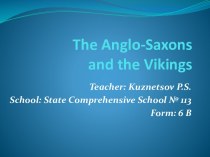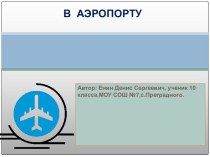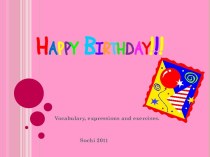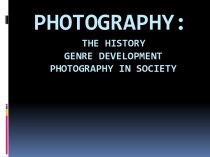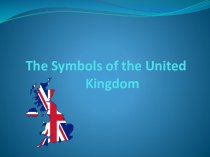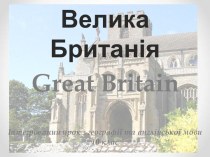Слайд 2
CONTENTS
1 EARLY LIFE
2EDUCATION
3 MARRIAGE
4 SEPARATION AND
DIVORCE
5 CHARITY WORK
6 DEATH
7.FINAL RESTING PLACE
8 ANCESTRY
9 TITLES, STYLES, HONOURS AND 10 ARMS
11TITLES
1 2 STYLES
13 ARMS
14 LEGACY
Diana, Princess of Wales (Diana Frances; née Spencer; 1 July 1961 – 31 August 1997) was the first wife of Charles, Prince of Wales. Their two sons, Princes William and Harry, are second and third in line to the thrones of the United Kingdom, Canada, Australia, New Zealand and 12 other Commonwealth Realms. After she separated from her husband in 1992, Diana's life was cut short in a car crash that is still surrounded by controversy.
Слайд 3
EARLY LIFE
Diana Frances Spencer

was the youngest daughter of Edward Spencer, Viscount Althorp,
and his first wife, Frances Spencer, Viscountess Althorp.She was born at Park House on the Sandringham estate in Norfolk, England. She was baptised at St. Mary Magdalene Church in Sandringham, by Rt. Rev. Percy Herbert (rector of the church and former Bishop of Norwich and Blackburn); her godparents included John Floyd (the chairman of Christie's).
During her parents' acrimonious divorce over Lady Althorp's adultery with wallpaper heir Peter Shand Kydd, Diana's mother took her and Diana's brother to live in an apartment in London's Knightsbridge, where Diana attended a local day school. That Christmas, the Spencer children went to celebrate with their father and he subsequently refused to allow them to return to the capital and their mother. Lady Althorp sued for custody of her children, but Lord Althorp's rank, aided by Lady Althorp's mother's testimony against her daughter during the trial, meant that custody of Diana and her brother was awarded to their father. On the death of her paternal grandfather, Albert Spencer, 7th Earl Spencer in 1975, Diana's father became the 8th Earl Spencer, at which time she became Lady Diana Spencer and moved from her childhood home at Park House to her family's sixteenth-century ancestral home of Althorp.
Слайд 4
A year later, Lord Spencer married Raine,
Countess of Dartmouth, the only daughter of the highly
eccentric romantic novelist Barbara Cartland, after being named as the "other party" in the Earl and Countess of Dartmouth's divorce. During this time Diana travelled up and down the country, living between her parents homes - with her father at the Spencer seat in Northamptonshire, and with her mother, who had moved North West of Glasgow in Scotland. Diana, like her siblings, did not get along with her new stepmother.
Слайд 5
EDUCATION
Diana was educated at
Riddlesworth Hall in Norfolk and at West Heath Girls'
School in Sevenoaks, Kent, where she was regarded as an academically below-average student, having attempted and failed all of her O-levels twice. In 1977, aged 16, she left West Heath and briefly attended Institut Alpin Videmanette, a finishing school in Rougemont, Switzerland. At about that time, she first met her future husband, who was dating her sister, Lady Sarah. Diana excelled in swimming and diving and reportedly longed to be a ballerina, but at 5 feet 10 inches was too tall.
Слайд 6
Following the completion of her formal education, Diana
begged her parents to allow her to move to
London, a request which was granted before she was seventeen. An apartment was bought for her at Coleherne Court in the Earls Court area, and she lived there until 1981 with her three flatmates. In that time she studied for a cordon bleu cooking diploma, although she hated cooking, and worked at Madame Vacani's Dance Academy in Kensington, but resigned because she didn't like the pushy stage school parents. Lady Diana then filled time as a cleaner and a cocktail waitress, before finding a job at the Young England kindergarten.
Слайд 7
MARRIAGE
THE PRINCE AND PRINCESS OF WALES RETURN FROM
THEIR 1981 WEDDING AT ST PAUL'S CATHEDRAL
Prince Charles's love life had always been the subject of press speculation, and he was linked to numerous glamorous and aristocratic women. In his early thirties, he was under increasing pressure to marry. Legally, the only requirement was that he could not marry a Roman Catholic; a member of the Church of England was preferred. His great-uncle Lord Mountbatten of Burma, who was assassinated by an IRA bomb in 1979, had advised him to marry a virginal young woman who would look up to him. In order to gain the approval of his family and their advisors, any potential bride was expected to have a royal or aristocratic background, as well as be Protestant and, preferably, a virgin.
Слайд 8
Diana seemed to meet all of these qualifications.
They married at St Paul's Cathedral on the 29
July 1981, watched by a global audience of almost one billion.
The Princess was the first Englishwoman to marry an heir to the throne for 300 years (when Lady Anne Hyde married the future James II from whom the Princess was descended). The bride wore a silk taffeta dress with a 25-foot train designed by the Emanuels, her veil was held in place by the Spencer family diamond tiara, and she carried a bouquet of gardenias, lilies-of-the-valley, white freesia, golden roses, white orchids and stephanotis.
Слайд 9
The Prince and Princess of Wales spent part
of their honeymoon at the Mountbatten family home at
Broadlands, Hampshire, before flying to Gibraltar to join the Royal Yacht HMY BRITANNIA for a 12-day cruise through the Mediterranean to Egypt. They finished their honeymoon with a stay at Balmoral.
The Prince and Princess made their principal home at Highgrove House near Tetbury, Gloucestershire, and shared an apartment in Kensington Palace
The Princess of Wales had two sons. Prince William Arthur Philip Louis was born on 21 June 1982 and Prince Henry (Harry) Charles Albert David on 15 September 1984, both at St Mary's Hospital, Paddington, in London.
Слайд 10
SEPARATION AND DIVORCE
The Prince and Princess of Wales
were separated on 9 December 1992, by which time
her relations with the rest of the Royal Family, excepting the Duchess of York, Sarah Ferguson, had also reached rock bottom. Their divorce was finalised on 28 August 1996. Diana received a lump sum settlement of around £17,000,000 along with a legal order preventing her from discussing the details. The Princess relinquished the style Her Royal Highness and instead was styled as Diana, Princess of Wales.
Слайд 11
After her divorce Diana, free of the royal
restriction on political involvement, began to align herself in
causes which had political overtones, especially those on the left, although always on a humanitarian rather than directly political level. Diana seemed to meet all of these qualifications.. She pursued her own interests in philanthropy, music, fashion and travel - although she still required royal consent to take her children on holiday or represent the UK abroad. Without a holiday or weekend home, Diana spent most of her time in London, often without her sons, who were with Prince Charles or at boarding school. She assuaged her loneliness with visits to the gym and cinema, private charity work, incognito midnight walks through Central London and by compulsively watching her favorite soap operas (East Enders and Brookside) with a 'TV dinner' in the isolation of her apartment.
Слайд 12
CHARITY WORK
Starting in the mid-
to late 1980s, the Princess of Wales became well
known for her support of charity projects. This stemmed naturally from her role as Princess of Wales - she was expected to engage in hospital visitations where she comforted the sick and in so doing, assume the patronage of various charitable organizations - and from an interest in certain illnesses and health-related matters.
Слайд 13
Owing to Public Relations efforts in which she
agreed to appear as a figurehead, Diana used her
influential status to positively assist the campaign against landmines, a cause which won the Nobel Prize in 1997 in tribute, and with helping to decrease discrimination against victims of AIDS. Her work often drew an analogy with that of Mother Teresa of Calcutta.
Слайд 14
DEATH
On 31 August 1997 Diana was killed in
a high speed car accident in the Pont de
l'Alma road tunnel in Paris along with Dodi Al-Fayed and their driver Henri Paul. Blood analysis shows that Henri Paul was legally intoxicated while driving. Tests confirmed that original postmortem blood samples were from driver Henri Paul, and that he had three times the French legal limit of alcohol in his blood. Conspiracy theorists had claimed that Paul's blood samples were swapped with blood from someone else—who was drunk—and contended that the driver had not been drinking on the night Diana died. Their Mercedes-Benz S280 sedan crashed on the thirteenth pillar of the tunnel. The two-lane tunnel was built without metal barriers between the pillars, so a slight change in vehicle direction could easily result in a head-on collision with the tunnel pillar.
Слайд 15
The death of Diana has been the subject

of widespread conspiracy theories, supported by Mohamed Al-Fayed, whose
son died in the accident. Her former father in law, Prince Philip, seems to be at the heart of most of them but her ex husband has also been named, and was questioned by the Metropolitan Police in 2005. Some other theories have included claims that MI6 or the CIA were involved. Mossad involvement has also been suspected, and this theory has been supported on US television by the intelligence specialist barrister Michael Shrimpton. One particularly outlandish claim, appearing on the internet, has stated that the princess was battered to death in the back of the ambulance, by assassins disguised as paramedics. These were all rejected by French investigators and British officials, who stated that the driver, Henri Paul, was drunk and on drugs. Blood tests later verified that Henri Paul was drunk at the time of the accident, although CCTV footage of Paul leaving the Ritz hotel with the princess and Dodi Fayed does not appear to depict a man in a drunken or incapable state.
Слайд 16
FINAL RESTING PLACE
Diana's final resting place is in
the grounds of Althorp Park, her family home. The
original plan was for her to be buried in the Spencer family vault at the local church in nearby Great Brington, but Diana's brother, Charles, the 9th Earl Spencer, said that he was concerned about public safety and security and the onslaught of visitors that might overwhelm Great Brington. He decided that he wanted his sister to be buried where her grave could be easily cared for and visited in privacy by her sons and other relations. He has since defended himself against accusations of profiteering.
Слайд 17
Lord Spencer selected a burial site on an
island in an ornamental lake known as The Oval
within Althorp Park's Pleasure Garden. A path with thirty-six oak trees, marking each year of her life, leads to the Oval. Four black swans swim in the lake, symbolizing sentinels guarding the island. In the water there are several water lilies. White roses and lilies were Diana's favourite flowers.
On the southern verge of the Round Oval sits the Summerhouse, previously in the gardens of Admiralty House, London, and now serving as a memorial to Diana. An ancient arboretum stands nearby, which contains trees planted by Prince William and Prince Harry, other members of her family and the Princess herself.
Слайд 18
TITLES, STYLES, HONOURS AND ARMS
Titles
1961-1975: The Honourable Diana
Frances Spencer
1975-1981: Lady Diana Frances Spencer
1981-1996: Her
Royal Highness The Princess of Wales
1996-1997: Diana, Princess of Wales
Styles
Posthumously, as in life, she is most popularly referred to as "Princess Diana", a title she never held. She is still sometimes referred to in the media as "Lady Diana Spencer", or simply as "Lady Di".
Diana's full style, whilst married, was Her Royal Highness The Princess Charles Philip Arthur George, Princess of Wales and Countess of Chester, Duchess of Cornwall, Duchess of Rothesay, Countess of Carrick, Baroness of Renfrew, Lady of the Isles, Princess of Scotland
Слайд 19
Arms
As the wife of the Prince of Wales,
Diana used arms that included the Royal Coat of
Arms of the United Kingdom with a plain, three-point label and the inescutcheon of the Coat of Arms of the Principality of Wales (the arms of the Prince of Wales), impaled with a shield bearing 1st and 4th quarters plain white, and the 2nd and 3rd quarters bearing a golden fret on a red background defaced with three escallopes (the arms of the Earl Spencer, her father). The supporters were the crowned golden lion from the Royal Arms, and a winged griffin from the Spencer arms. The shield was topped by the Prince of Wales crown. Her motto was Dieu Defend le Droit (English: God defends the right), also used in the Spencer arms.
After her divorce, Diana used the arms of the Spencer family, crowned by a royal coronet.
Слайд 20
Legacy
Diana's interest in supporting and helping young people
led to the establishment of the Diana Memorial Award,
awarded to youths who have demonstrated the unselfish devotion and commitment to causes advocated by the Princess. In 2002, Diana was ranked 3rd in the 100 Greatest Britons poll, outranking Queen Elizabeth II and other British monarchs.
Princes William and Harry are currently organising a concert to be held in memory of their mother on 1 July 2007 — it would have been her 46th birthday. The concert will be staged at the rebuilt Wembley Stadium. Confirmed acts include Duran Duran, Joss Stone, Elton John, Andrew Lloyd Webber, English National Ballet, Pharrell Williams and Bryan Ferry. Tickets went on sale on 13 December 2006 and sold out within minutes. A memorial service is planned for 31 August 2007.























